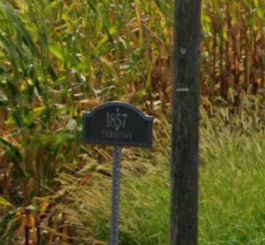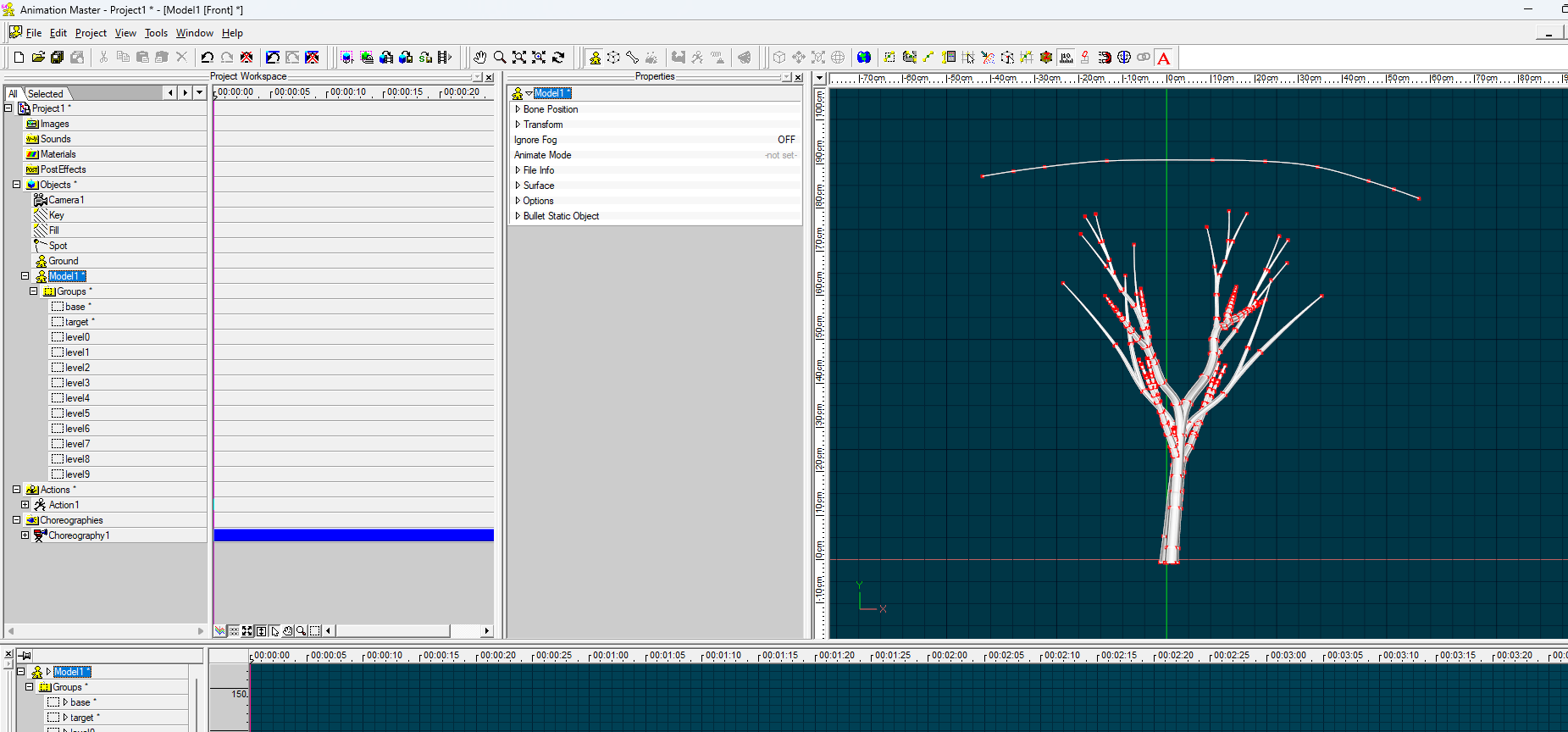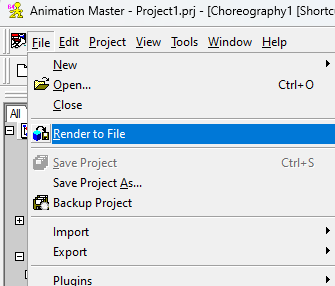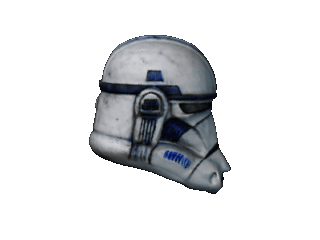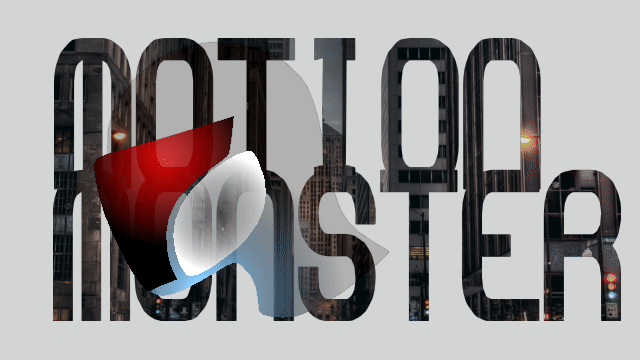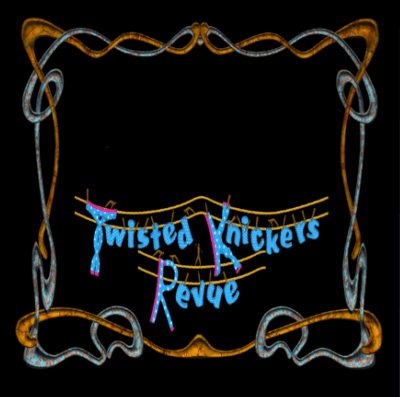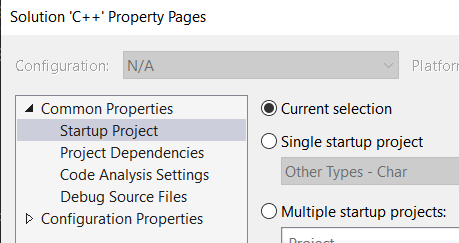-
Posts
21,648 -
Joined
-
Last visited
-
Days Won
119
Content Type
Profiles
Forums
Events
Everything posted by Rodney
-
I was doing a Google Map search on various places and I thought... hmmm... Tuckertown... I wonder if the sign is viewable. And... it is! It's a little hard to read but the sign is still there. I see varioius mentions of Tuckertown and Tuckerville online but none I've seen thus far are THIS Tuckertown.
-
We need to get you a copy of SimpleStanley. I know you'd have fun animating and modifying that character. Im attaching a few files related to that. SimpleStanley2024Revisit.zip TLBSimpleStanley2024Revisit.prj Project1.prj
-

Links to Earliest Web Pages with Hash AM Training material
Rodney replied to Samaritan2's topic in Open Forum
What the heck... I always thought Tony Lower-Basch was awesome but... How in the world did I never see his Simple Stanley model/rig? Move the character anywhere and the rig stays in place. FK/IK, Center of Gravity and all sorts of other neat things. Probably broke the model in messing around with it. This retrieved from a link on Vernon Zehr's A.R.M. site. SimpleStanley.mp4 TLBSimpleStanley2024Revisit.prj Stanley.txt -

Links to Earliest Web Pages with Hash AM Training material
Rodney replied to Samaritan2's topic in Open Forum
I thought Yves Poissant's website was largely lost but most of it can be retrieved. Keep in mind that many resources have been brought forward in some way or other. Some resources have made their way to the Extras CD or DVD and others right into Animation:Master itself. Many of these primitive shapes can be found in the A:M's internal Library: BeveledPrimatives.mp4 -

Links to Earliest Web Pages with Hash AM Training material
Rodney replied to Samaritan2's topic in Open Forum
Finding resources sites like Vernon Zehr's 'The A.R.M.' and JIm Sherwood's 'Sherwoods Forest' are particlarly useful because collected sites, links and resources. Definitely look through those. https://web.archive.org/web/20050706040914/http://www.lowrestv.com/arm/ https://web.archive.org/web/20060103000908/http://www.hash.com/sherwood/index.asp -

Links to Earliest Web Pages with Hash AM Training material
Rodney replied to Samaritan2's topic in Open Forum
Here for instance is an archived site of Emilio Leroux... author of the Sweeper Plugin... Where his older SetBias plugins is described and can still be downloaded. (likely only works on old releases of A:M) (https://web.archive.org/web/20041220104344/http://www.moscafilms.com.br/emilioleroux/amplugins_setbias.html) Aside: Emilio was the first to clue me in to the power of tweaking biases on splines. -

Links to Earliest Web Pages with Hash AM Training material
Rodney replied to Samaritan2's topic in Open Forum
Sadly, short of content that has made its way to the Extras CD and Extras DVD the most likely way to get to old copies of those sites is via Archive.org's Wayback Machine. Even there a lot of the connectivity has been lost over time. If you are dilegent however... treasure can be found. Try looking for Animation:Master users of the past whose websites might be archived: https://web.archive.org/web/19970120055548fw_/http://www.hash.com/users.html This will take you to where you can find different vintages of users listed on via www.hash.com: https://web.archive.org/web/20050701082243/http://www.hash.com/ -
Hi Rusty, Always good to see you! There is the Treez plugin that is lauched from an Action. Perhaps you are thinking of that Plugin? It's not easily discoverable... had to remind myself how to use it but my memory came through for me. The key steps: Spline/Lathe a base shape - For example, Lathe a 2 control point spline into cylinder with 5 cross sections and then lop off/remove the top half leaving a circle. Select and name this group "base". Create a spline, plane, grid or set of splines and grids and place these above the circle/base as a target for the canopy to be created. If designed well you might be able to use these patches for leaves later. I call this group of splines and patches "target" although when generating using the Treez plugin It may be whatever is selected that becomes the target. Now the crucial launching step... Create an Action that uses this model, Right Click > Plugins > Treez This should launch and run to project the base toward the target. Edit: Just now see Robert's response and that will likely have more detail. Note that the target's control points are what determines where the branches will be generated and target.
-

How do I make a image file using Hash? is it even possible to make it?
Rodney replied to Pizza Time's topic in New Users
Regarding rendering images to file, Steffen was kind enough to add a Render option to the File menu. This is something even old time users of Animation:Master never had. That (in theory) makes rendering images more easily discoverable than using the classic Render icon. If we haven't saved our project, by default A:M will prompt us to save the project first and then take us to the Render options panel. Aside: In working with 2D folks I've noted that many simply don't have the term 'render' in their production vocabulary. For me. prior to engaging with 3D. I guess it meant 'to tear apart' but more closely means 'to separate or refine into detailed parts' as in 'the man drew a finely rendered drawing of the barn'. After introduction to 3D it just became the way we create images from our projects. -
Something you can do as well is select the Camera and then Right Click > Duplicate to create a copy of the camera that stores the settings of the current camera. Then it's easy to return to that later as needed. I like to do that when I have the camera almost in a perfect position or with ideal settings but feel the need to experiment. Better to just create a new Camera with current settings and press on with that new Camera. Then if those changes don't work out... just delete the camera. A bit off topic... We can also save the Camera as a .cam (Camera) file but that doesn't particular help with animated cameras. There are some other options that can help in those cases such as creating an empty Model to house an Action and then add a Camera to that Action. Then that Camera is an Action Object inside of that Action which can be drag/dropped into Choreographies and even onto other Models. Edit: Steffen also added the View Undo/Redo feature several years back that can be quite useful.
-
Here's a fun experiment. A Clone Trooper helmet created via AI generation... text prompt to 3D model... output to OBJ format. Brought into A:M as a prop object. Here's a link to the original result prior to refinement (on LumaAI): https://lumalabs.ai/genie?one=3a206fdc-7ec1-41ba-8a75-99aaba7a709d&two=d348c729-2e62-4efa-8561-49382fdcd49a&three=1f7d8eb8-f392-4579-9f3a-a4b57478dce1&four=e368e03d-ac93-4fa6-bb7d-cb4b29a28962&view=one&metalness=0&roughness=0.95&color=255%2C255%2C255
-
I must not have as I would have posted it here. The good news is that the helmet doesn't look overly complicated so I'm confident you can model it. Apparently back in 2016 I modeled the following head/helmet which isn't too far away from the Storm Trooper style. I have no idea where that model would be however. (Bit o trivia: Motion Monster was a temporary fork of the 2D Opentoonz program that was used for testing experimental code... created by a guy named Jeremy Bullock which interestingly enough is NOT the actor that played BobaFett in Starwars but does share his name)
-
Wow. Yes, very nice!
-
I think the toonnation site is only avialable via the wayback machine. link: https://web.archive.org/web/20050205133114/http://members.lycos.co.uk/toonnation/ I believe most if not all of the toonnation resources are now included with Animation:Master.
- 1 reply
-
- 1
-

-
@JackDrama A large number of the models on the A:M Extras CD were created by Alain Descochers. About the time that I started with A:M (1998 timeframe) Alain had an extensive website that featured most of his models. They were avialable for purchase at that time. Later when he closed his website many of the models began to make their way to other sites such as The A.R.M. (Vernon Zehr's A:M assets website) as well as others. In the process of collecting resources for the A:M CD the entire collection (or at least what was generally available) was donated to the cause. All of the characters were used in some way for some production (or at least preproduction) work. I believe most of those can be seen on the Hash CG History youtube channel although a quick search didn't turn anything up. Here's the link to that channel: https://www.youtube.com/@hashcghistory3211/shorts
-
For those interested in such things, I've updated the direct link to the SDK. The forum had that hard coded to point at the v19.0 zipfile. Now points to the v19.5 file. The link at the top of this topic pointed to the correct location so nothing has changed there.
-
That's very cool @Madfox There are a number of different approaches you might take... one of which I think might be to use Animation:Master's lipsyncing tools... but... woowee... its been awhile since I played with those. A problem here might be the limited number of phonemes available to the lipsyncing tools. Hmmm... Have to think abou this one but if you have all of the animations for each letter contained in one output file (AVI) then you could also find a way to dial in specific frames of that animation. How to do that in time and space across wordings... a bit more difficult. If I were to do this in another program such as Opentoonz I might assign each letter as it's own 'level' (separate sequence or file) and then expose those directly via typing in as exposures. Your AVI as a GIF animation for those interested:
-
I reordered about a week ago. Instant response as always although I generally don't use any emails. Generally when ordering you can use the email (that for me also arrives immediately) but there is also a message in the store itself confirming order and supplying information/links. You might double check to see if your paypal account (or credit card**) was charged. If not then likely the order didn't go through which in turn would not generate an email. I haven't read all the postings so if you've already confirmed that... press on. press on. (Just now read the part about checking out a guest) **For those using credit card that goes intially through the paypal menu at the store but then we'll (eventually) get the option to change to credit card. I've been using paypal just for ease of purchase lately though.
-
Couldn't leave this one alone so had to see how easy it would be to assign the groups to words instead of letters... NamedGroupsAppearancingB.prj
-
I thought of an even better approach... one that probably follows that identified in the Live Answer Time video more closely. I only skimmed the video so am not sure what all went into that approach. The idea is to create and animate named groups (using Hold Interpolation) to turn on/off transparency for each letter (or model) assigned to a group. A benefit is that if something changes (or needs to be changed) it can be done largely by assignment of the groups which then will inherit the appearing action automatically. One of Animation:Master's strengths above all other software is it's ability to leverage Named Groups. NamedGroupsAppearancing.prj
-
When I first read this topic several approaches to this came to mind... including use of Boolean cutters to remove letters. I tested that and it worked although I was having difficulty making it work as simply as I wanted. Then I thought... black background... colored letters... Why not just move a black colored patch over the letters to 'unhide' them? And that's what I ended up with here: Note that this isn't 'per-letter' as I didn't take the time to make sure each frame only revealed one letter. The final words 'and the' could be revealed just by moving another black colored patch back behind the patch that is displaying the title card (or models). Added the no frill proof of concept project file (see attached). TitleCard RevealA.prj
-
Visual Studio Code is an entirely different program (also from Microsoft)... so not quite sure what you are referring to here. BUT... Good news. Restarting Visual Studio appears to have resolved the problem!
-
I knew there had to be an option to keep from having to specifically activate what project runs when debugging in a solution, and there is... Right Click on the solution and open Properties. There you should see an option to run the selected project versus the default 'Single Startup project' that gets updated each time we select and set a specific project as the startup project. Change that option (radio button) to 'Current selection' and whatever project is selected in the Solution Explorer at the time of running debug (or release) should run.
-
Nice one John! Any time I see 'Shaggy' I am always reminded of when we were working on the Extras CD and Steve Sappington emailed me asking "Where's Shaggy????". He almost seemed to be in a panic. I was pretty sure both Shaggy and Scoobie were on the CD but... the sense of panic didn't seem to equate to the lack of presence of the model on the CD. It didn't take long however to figure out Steve meant 'Shaggy'... as in the character from 'The Art of Animation:Master' that was essential to being present for the 'Where's the Door' Excercise etc. Oh! THAT Shaggy! And yes, somehow he was missing from the files. Shaggy was added and that particular crisis narrowly averted. Go Shaggy!
-

Stalled Trek: The City on the Edge of Foreclosure
Rodney replied to largento's topic in The Wannabe Way
Impressive work as always Mark! And very entertaining.










